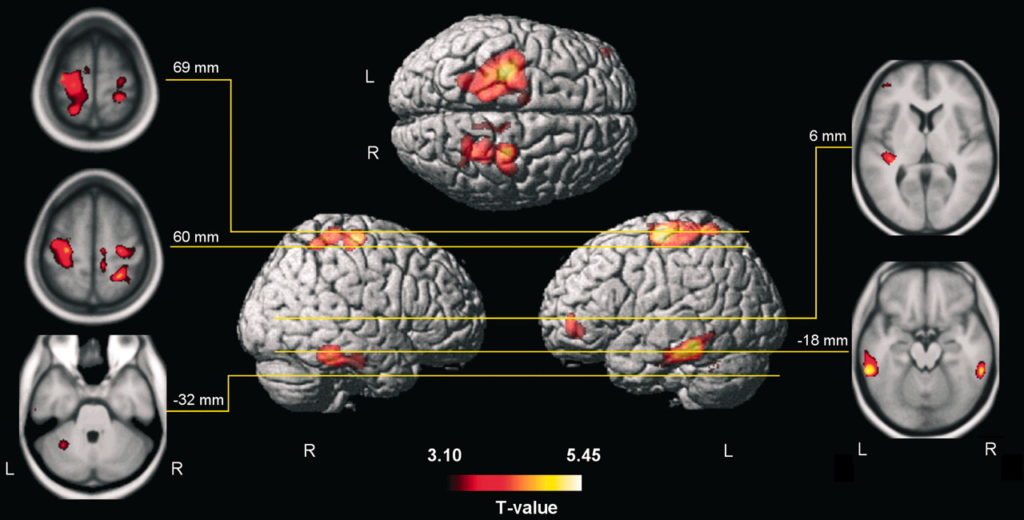Cerebral Pitching

In speech, the highly flexible modulation of vocal pitch creates intonation patterns that speakers use to convey linguistic meaning. This human ability is unique among primates. Here, we used high-density cortical recordings directly from the human brain to determine the encoding of vocal pitch during natural speech. It is found neural populations in bilateral dorsal laryngeal motor cortex (dLMC) that selectively encoded produced pitch but not non-laryngeal articulatory movements. This neural population controlled short pitch accents to express prosodic emphasis on a word in a sentence. Other larynx cortical representations controlling voicing and longer pitch phrase contours were found at separate sites.
DLMC sites also encoded vocal pitch during a non-speech singing task. Finally, direct focal stimulation of dLMC evoked laryngeal movements and involuntary vocalization, confirming its causal role in feedforward control. Together, these results reveal the neural basis for the voluntary control of vocal pitch in human speech.
Voice modulation that is the mandate of any oration or singing or any communication with varied notes of our speech make communication more expressive and relevant , the pitch of our voices determines the ability of human communication. In the ongoing research to demonstrate a dynamic picture of neural function it is endorsed by researchers the part of the brain that controls vocal pitch.
The human brain regulates the pitch of sounds emanating from the voice box, or larynx, as described by neuroscience. Thus neurology could assist people who have speech disorders or who’ve had their larynxes removed due to injury or disease.
Our ability to speak is controlled in the sensorimotor cortex, part of the brain’s cerebral cortex.
